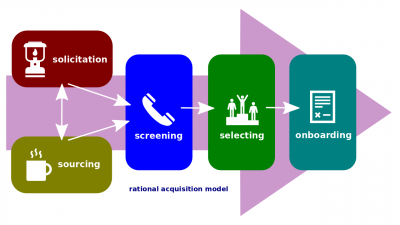Difference between revisions of "Sourcing"
(→Related lectures) |
|||
| (4 intermediate revisions by the same user not shown) | |||
| Line 10: | Line 10: | ||
==See also== | ==See also== | ||
===Related practices=== | ===Related practices=== | ||
| − | :*[[ | + | :*[[Careerprise Presence]], [[Careerprise Literacy]]. |
===Related lectures=== | ===Related lectures=== | ||
| − | :*[[Market | + | :*[[Market Intercourses Quarter]]. |
:*[[What Sourcing Is]]. | :*[[What Sourcing Is]]. | ||
[[Category: CNM Cyber Orientation]][[Category: Septem Artes Administrativi]][[Category: Articles]][[Category: Management]][[Category: Information Technology]] | [[Category: CNM Cyber Orientation]][[Category: Septem Artes Administrativi]][[Category: Articles]][[Category: Management]][[Category: Information Technology]] | ||
Latest revision as of 03:35, 14 June 2023
Sourcing is the aggregate of enterprise efforts that are undertaken in order to identify and list possible sources, internal and/or external, that are potentially capable to provide the specified organizational resources, as well as potential data sources who are able to provide relevant information on specific acquisition and/or procurement.
Definitions
According to the HRBoK Guide,
- Sourcing. Finding qualified people for a job. Identifying candidates who are qualified to do a job by using proactive recruiting techniques.
According to the ITIL Foundation 4e by Axelos,
- Sourcing. The activity of planning and obtaining resources from a particular source type, which could be internal or external, centralized or distributed, and open or proprietary.
